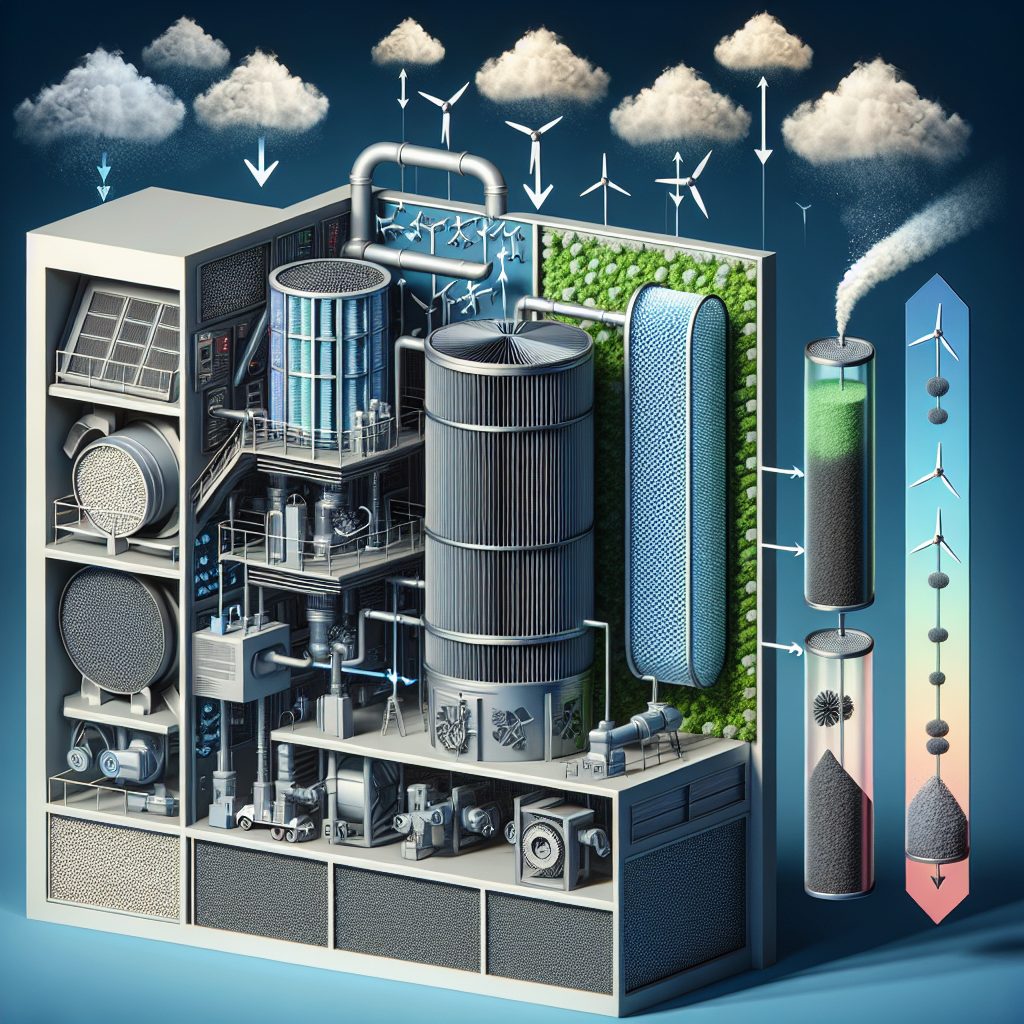Category: Air Winds

Indoor Aerosols
Indoor aerosols are tiny particles suspended in the air within enclosed spaces. These particles can range in size from a few nanometers to several micrometers and can originate from a variety of sources, including cooking, cleaning products, and even human activities such as breathing and talking. Interestingly, indoor aerosols can…

Aerosol Dynamics
Aerosol Dynamics refers to the study and understanding of the behavior and movement of tiny airborne particles, known as aerosols, in the atmosphere. These particles can be natural, such as dust and pollen, or human-made, including pollutants and industrial emissions. What makes aerosol dynamics fascinating is the complex interplay between…

Atmospheric Aerosols
Atmospheric aerosols refer to tiny solid or liquid particles suspended in the Earth’s atmosphere. These aerosols can include dust, smoke, and pollutants, as well as natural substances such as sea salt and pollen. One unique fact about atmospheric aerosols is that they can be either directly emitted into the atmosphere…

Aerosols in Climate Change
Aerosols in Climate Change Aerosols, in the context of climate change, refer to tiny solid or liquid particles suspended in the Earth’s atmosphere. These particles can originate from either natural sources, such as volcanic eruptions and dust storms, or anthropogenic activities, including industrial emissions and the burning of fossil fuels.…

Airborne Particles Monitoring
Airborne Particles Monitoring refers to the process of measuring and analyzing the presence of particles in the air. These particles can be solid or liquid and can vary greatly in size and composition. Understanding the quality of the air we breathe is crucial, as airborne particles can have a significant…

Aerosol Emissions
Aerosol emissions refer to the release of tiny particles into the atmosphere through various human activities, such as industrial processes, combustion of fossil fuels, and aerosol sprays. These particles can be solid or liquid and range in size from nanometers to micrometers. One unique fact about aerosol emissions is that…

Aerosol Dispersion Modeling
Aerosol Dispersion Modeling is a scientific methodology used to simulate and predict the movement and spread of aerosols, such as pollutants or infectious particles, in the air. By utilizing mathematical equations and computer algorithms, aerosol dispersion models can provide valuable insights into how these particles disperse, allowing scientists and researchers…

Industrial Aerosol Control
Industrial aerosol control is a crucial aspect in various industries today. Aerosols, which are defined as tiny particles or droplets suspended in a gas, can have a significant impact on production processes and the overall environment. These aerosols can be generated from a wide range of sources such as manufacturing…

Aerosols in the Atmosphere
Aerosols in the atmosphere refer to tiny solid or liquid particles suspended in the air. These particles come from various sources such as natural events like volcanic eruptions and forest fires, as well as human activities like industrial emissions and vehicle exhausts. Interestingly, aerosols play a crucial role in the…
Aerosols and Allergies
Aerosols are a prevalent and fascinating topic that has been gaining attention in recent years. But what exactly are aerosols? Well, the term “aerosol” refers to tiny particles suspended in the air. These particles can come from a variety of sources, including natural processes like volcanoes or wildfires, as well…

Aerosols in Atmospheric Science
Aerosols in Atmospheric Science refer to tiny solid or liquid particles suspended in the Earth’s atmosphere. These particles can originate from natural sources such as volcanic eruptions and dust storms, as well as human activities like industrial processes and vehicle emissions. Aerosols play a crucial role in atmospheric science as…

Aerosols and Global Health
Aerosols, in the context of global health, refer to tiny particles suspended in the air, typically measuring less than 2.5 micrometers in diameter. These particles can originate from various sources, including natural events such as volcanic eruptions and forest fires, as well as human activities like industrial emissions and vehicle…

Filtering Aerosols from the Air
Filtering aerosols from the air is a crucial aspect of maintaining clean and breathable environments. Aerosols, which are tiny solid or liquid particles suspended in the air, can have a significant impact on our health and well-being. These particles can range in size from a few nanometers to several tens…

Aerosol Sampling Techniques
Aerosol Sampling Techniques play a critical role in understanding and monitoring airborne particulate matter. Aerosols are tiny solid or liquid particles suspended in the air, ranging in size from a few nanometers to several micrometers. These particles can be generated from various sources such as combustion processes, industrial activities, and…

Aerosols and Human Health
Aerosols, often referred to as fine particles suspended in the air, have a far-reaching impact on human health. These tiny particles, which can be solid or liquid, come from various sources such as natural emissions (e.g. dust, sea spray) and human activities (e.g. industrial processes, vehicle emissions). One unique fact…

Atmospheric Jet Streams
The atmospheric jet streams are fast-flowing, narrow air currents found in the upper levels of Earth’s atmosphere. These strong winds blow from west to east and are located between the boundaries of two different air masses. A unique fact about atmospheric jet streams is that they can reach speeds of…

Types of Jet Streams
Jet streams are high-altitude, narrow bands of strong wind that blow from west to east in the Earth’s atmosphere. They are found in the upper troposphere and lower stratosphere, typically between 7 to 12 kilometers above the surface. These powerful and fast-moving air currents play a crucial role in shaping…

Aerosol Filtration Technologies
Aerosol Filtration Technologies refer to the various methods and technologies used to filter and remove aerosol particles from the air. Aerosols are tiny solid or liquid particles suspended in the air, which can come from a variety of sources such as smoke, dust, pollen, and pollutants. These particles can have…

Optical Properties of Aerosols
Optical Properties of Aerosols refer to the characteristics of tiny solid or liquid particles suspended in the Earth’s atmosphere. These aerosols can vary in size from nanometers to micrometers, and their optical properties play a crucial role in determining how sunlight is scattered and absorbed in the atmosphere. Now, you…

Role of Jet Streams in Storms
Jet streams play a critical role in the formation and intensification of storms. These are narrow bands of strong winds that blow in the upper levels of the atmosphere, usually around 30,000 to 40,000 feet above the Earth’s surface. One unique fact about jet streams is that they can reach…
